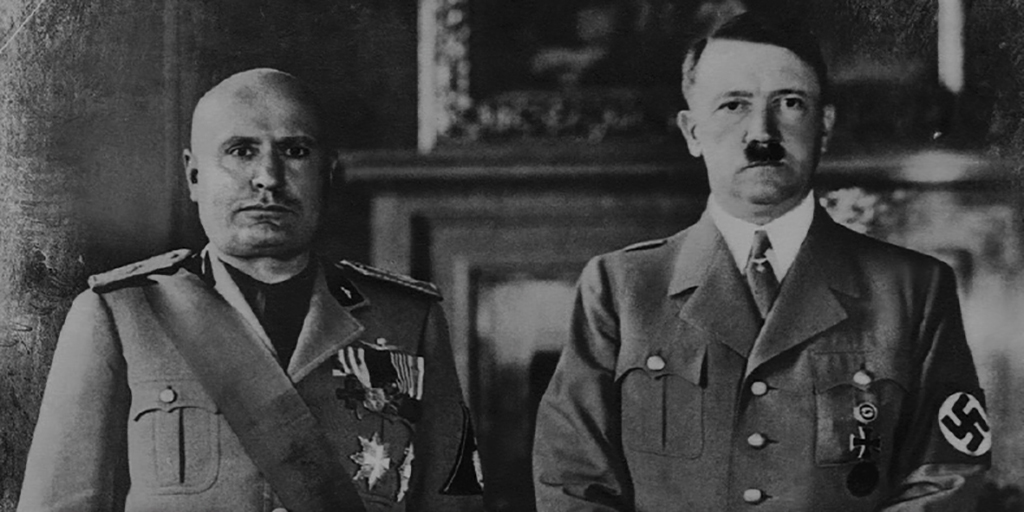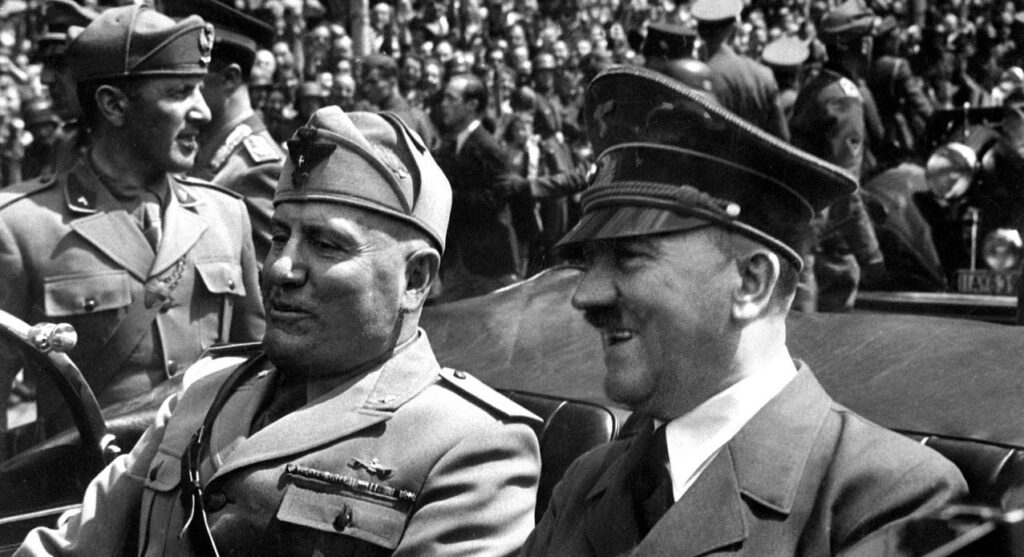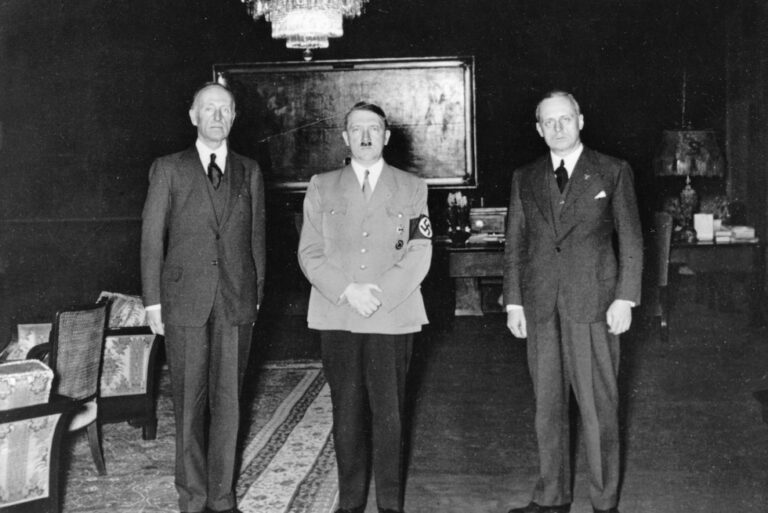Adolf Hitler had friends, but August Kubizek was his closest during their youth. They met in Vienna in 1905, sharing a love for music and art. Kubizek described Hitler as “gentle and sensitive,” interested in politics and philosophy.
As World War I neared, they drifted apart, staying in touch until the early 1920s. Kubizek grew unhappy with Hitler’s politics, ending their friendship.
In 1955, The Young Hitler I Knew” Kubizek wrote a memoir about Him showing him as both kind and cruel. While criticized for potential inaccuracies, the memoir sheds light on Hitler’s early years. Then, he passed away on October 23, 1956.
Early Life of Adolf Hitler
Adolf Hitler was born on April 20, 1889, in Braunau am Inn, Austria. His parents were Alois and Klara Hitler, and he had several siblings. During his childhood and youth, the family moved to Linz and later to Lambach. He developed an early interest in art and applied to the Vienna Academy of Fine Arts, but faced rejection.
Moreover, his youth was marked by struggles and challenges, and after the death of his father, he moved to Vienna in 1907. In Vienna, he faced financial difficulties and lived a bohemian lifestyle while trying to pursue a career in art. This period is crucial in understanding the formative years of a young Hitler, who would later rise to prominence as the leader of Nazi Germany.
Hitler’s Rise to Power

Adolf Hitler’s rise to power was a complex process shaped by the aftermath of World War I and the socio-political climate in Germany during the early 20th century.
- Formation of the Nazi Party:
- Hitler joined the German Workers’ Party in 1919, which later became the National Socialist German Workers’ Party (Nazi Party).
- His charisma and oratory skills contributed to his rapid rise within the party.
- Beer Hall Putsch:
- In 1923, he attempted to seize power in Munich through a failed coup known as the Beer Hall Putsch.
- Despite its failure, this event provided him with national attention and a platform to articulate his nationalist and anti-Semitic views in his book, “Mein Kampf.”
- Political Ascendancy:
- The economic challenges of the Great Depression in the early 1930s created a fertile ground for extremist ideologies.
- The Nazi Party gained widespread support, and in 1933, Hitler was appointed as Chancellor of Germany.
- Consolidation of Power:
- The Reichstag Fire in 1933 was used as a pretext to push through the Reichstag Fire Decree, limiting civil liberties.
- The Enabling Act further consolidated his power by giving him dictatorial authority.
- Propaganda and Indoctrination:
- Joseph Goebbels, the Minister of Propaganda, played a crucial role in shaping public opinion through propaganda and censorship.
- Also, his charismatic speeches and mass rallies fostered a sense of nationalistic fervor.
- Persecution of Minorities:
- Anti-Semitic policies were implemented, culminating in the Nuremberg Laws that discriminated against Jews.
- Political opponents and dissenters were suppressed, leading to the establishment of a totalitarian regime.
- Expansionist Policies:
- Then, he pursued an aggressive foreign policy, remilitarizing Germany and annexing Austria (Anschluss) in 1938.
- The occupation of Czechoslovakia followed, leading to increased tensions in Europe.
- The outbreak of World War II:
- Lastly, his expansionist ambitions ultimately led to the invasion of Poland in 1939, marking the beginning of World War II.
Personal Relationships of Adolf Hitler
| Relationship Category | Individuals | Key Points |
| Family Ties | Angela Raubal | Hitler’s half-sister; close relationship. Geli Raubal, Angela’s daughter, had a mysterious death in 1931, raising questions. |
| Friendships and Confidantes | August Kubizek | Friend from Hitler’s youth; described in “The Young Hitler I Knew.” |
| Rudolf Hess | Early ally and Deputy Führer; later fell out of favor. | |
| Joseph Goebbels | Minister of Propaganda; close associate and confidant. | |
| Eva Braun | Eva Braun | Became Hitler’s companion in the 1930s; married before joint suicide in 1945. |
| Relationship kept private, not involved in political matters. | ||
| Inner Circle | Heinrich Himmler | Part of Hitler’s inner circle of advisors. |
| Hermann Göring | Part of inner circle; rivalry and power struggles. | |
| Martin Bormann | Inner circle member; dynamics marked by rivalry and competing interests. | |
| Isolation and Secrecy | He is known for maintaining isolation and secrecy. Centralized leadership style with limited input from others. | |
| Betrayals and Purges | Night of the Long Knives (1934) | Purges within the inner circle due to his paranoia and distrust. |
| Long-time supporters are not immune to suspicion and removal if deemed a threat. | ||
| Animosity with Certain Individuals | Werner von Blomberg | Strained relationship with military commanders. |
| Werner von Fritsch | Tensions with military leaders. | |
| Claus von Stauffenberg (1944) | Failed assassination attempt highlighted internal opposition. |
Speculative Candidates for Hitler’s Best Friend
| Speculative Candidate | Connection to Hitler | Details |
| August Kubizek | Childhood friend | Wrote about their friendship in “The Young Hitler I Knew” |
| Friedrich Kubizek | Friendship during Vienna days | Limited documentation, associated with Hitler in Vienna |
| Ernst Hanfstaengl | Early ally | Member of his inner circle |
| Heinrich Hoffmann | Personal photographer and associate | Documented many aspects of Hitler’s life, close connection |
August Kubizek’s Life Journey
August was born in Linz, Austria, and was the only surviving child in his family. His dad, Michael Kubíček, worked as an upholsterer, and his mom, Maria Panholzer-Bláhová, had a tough childhood. He lost his sisters, Maria, Therese, and Karoline when they were very young.
Then, August and Hitler met while trying to get a standing room in a theater in Linz. They became friends because they both loved the operas of Richard Wagner. Later, they even shared a small room in Vienna while trying to get into college.
Also, he was supposed to take over his dad’s upholstery business, but he secretly wanted to be a conductor. With Hitler’s support, he spent more time on his passion for music. He convinced August’s dad to let him go to the conservatory in Vienna. This decision changed August’s life.
Furthermore, he got into the Vienna Conservatory and became well-known. Meanwhile, Hitler faced some challenges trying to get into Vienna’s art academy, but he didn’t tell August. In 1908, Hitler suddenly ended their friendship and went through a tough time.
Lastly, he finished his studies in 1912 and worked as a conductor in Austria. He married Anna Funke before serving in the Austro-Hungarian Infantry during World War I. He got injured but went back to the front. After the war, he worked in the municipal council of Eferding, Upper Austria, and enjoyed music as a hobby.
Reconnecting with Hitler
After spotting Hitler on the front page of a magazine around 1920, he started keeping an eye on his friend’s journey, even though he didn’t try to reach out until 1933. In that year, he became the Chancellor of Germany, and Kubizek wrote him a letter to offer congratulations. Surprisingly, he replied on August 4, expressing his wish to reminisce about the good old days they shared.
As things got tough for Hitler, Kubizek, who had stayed away from politics, joined the Nazi Party in 1942 as a way to show his loyalty to his old friend.
August Kubizek: Memoirs of Friendship and Controversy

In December 1945, Kubizek carefully hid a collection of keepsakes from Hitler in his house’s basement in Eferding. Shortly after, he was arrested by the American forces and taken to Glasenbach, where he faced imprisonment and questioning by the U.S. Army Criminal Investigation Command. Although his home was searched, the letters and drawings from Hitler weren’t found. Kubizek was released on April 8, 1947.
In 1951, he who had turned down previous offers to write about his life, decided to publish his memoir titled “Adolf Hitler, My Childhood Friend” through Leopold Stocker Verlag. Originally written in 1943 at Martin Bormann’s request, the book was initially 150 pages long.
However, after answering questions from Hitler biographer Franz Jetzinger, Kubizek expanded it to 352 pages, including pictures of postcards and sketches given to him by Hitler in their youth.
The memoir, released in 1953, stirred some attention and was translated into various languages. In the epilogue, he expressed his unwavering acknowledgment of his friendship with Hitler despite his personal disinterest in politics.
In the end, Kubizek’s second wife, Pauline (1906–2001), contributed additional photographs for the book’s fourth edition in 1975. He passed away on October 23, 1956, at the age of 68, in Linz. He is buried in Eferding, Upper Austria.
FAQ’s
Who was Adolf Hitler’s son?
It is alleged that Hitler had a son named Jean-Marie Loret with a Frenchwoman named Charlotte Lobjoie.
Who was Hitler’s closest confidant?
Until his flight to England, Rudolf Hess was Hitler’s closest personal confidant, being informed of Hitler’s aggressive plans.
What is Hitler’s daughter about?
“Hitler’s Daughter” is a book about a young girl named Heidi living during World War II. It explores her story, hauntingly tied to the image of Hitler’s fictional daughter, Anna.
Who is Hitler’s family?
Hitler’s family included Eva Braun, Paula Hitler, Alois Hitler, Klara Hitler, Otto Hitler, and Alois Hitler Jr.
Who was Hitler’s crush?
Stefanie Rabatsch, an Austrian woman, was allegedly an unrequited love of teenage Adolf Hitler, as claimed by his childhood friend August Kubizek.
Who spared Hitler’s life?
Henry Tandey, a British soldier, spared Hitler’s life during World War I by not shooting him when he had the chance on the battlefield.
Who invented blitzkrieg?
Heinz Guderian, an innovative member of the German military, developed the blitzkrieg, a form of military operation, shortly before World War II.
Final Words
In unraveling the question of who was Hitler’s best friend, the complexity of his relationships becomes apparent. While August Kubizek stands out as one of Hitler’s close friends during their youth, labeling one person as his “best friend” oversimplifies the intricate web of connections in his life. Various individuals influenced him at different times, each contributing to his life in unique ways.
Moreover, the historical narrative around Hitler’s friendships is rich but complex. August Kubizek, through his memoir, provides valuable glimpses into His early years, offering insights into a friendship that evolved over time.

